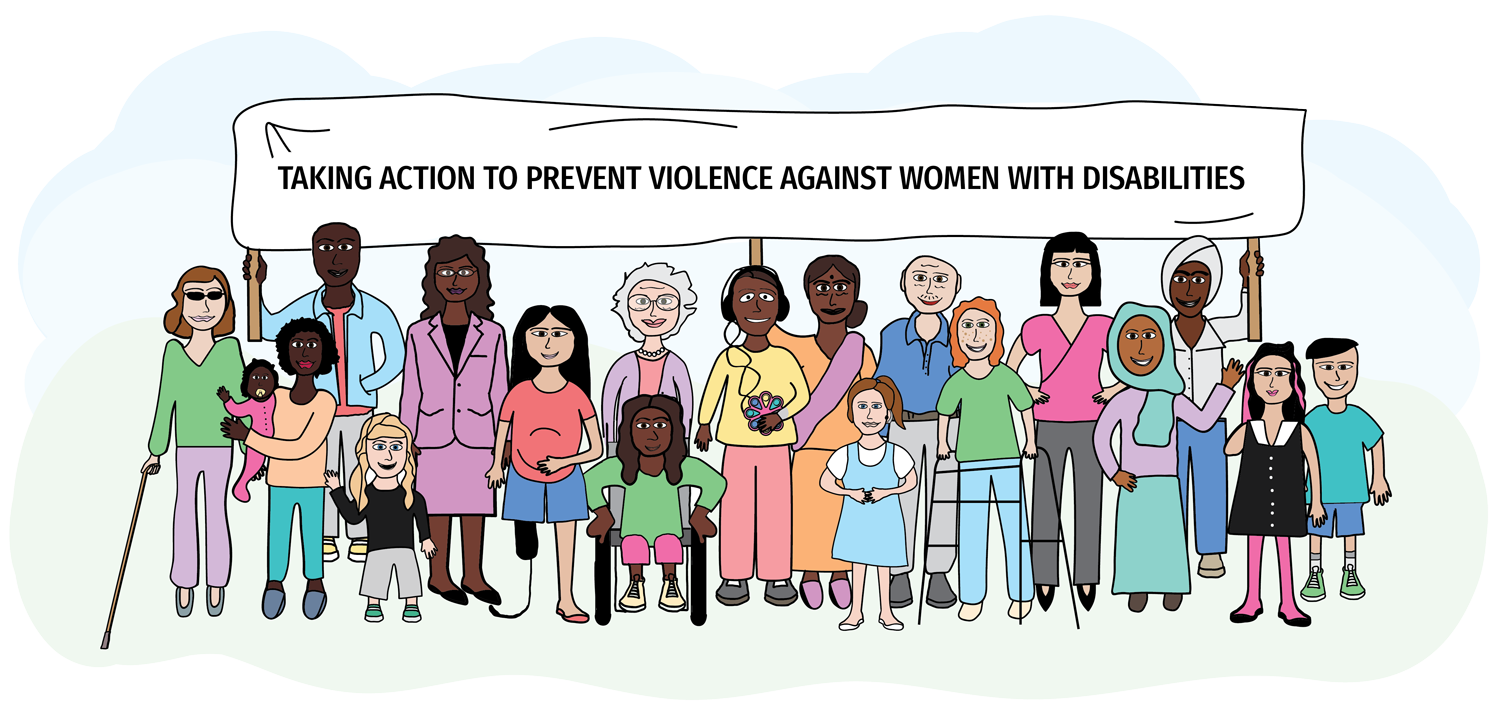Violence and Disability
Published: November 18, 2024
Blog
Australian headlines continue to be dominated by stories about violence against women. Australian women are dying, often at the hands of a partner, ex or family member, with intolerable regularity. The deaths are devastating, and we know that even more women are left injured, displaced or traumatised by violence.
While rates of violence against women overall are shocking, women and girls with disabilities experience violence, abuse and neglect at much higher rates, over longer periods of time and perpetrated by more people .
Women with a disability are 40% (1) more likely than women without a disability to experience domestic and family violence, and nearly twice as likely to face sexual and physical abuse (2). Sixty five percent (3) of women with a disability have experienced at least one incident of violence in their adult life . They are almost twice as likely to have experienced economic abuse by a cohabiting partner in the last two years (4) .
Violence against women is rooted in inequity and men’s control over women. Women and girls with disability have additional dependency, isolation and vulnerability that can be exploited by perpetrators making them even more at risk (5).
Alongside the gendered drivers of violence, Our Watch describes the ‘ableist’ drivers of violence against women and girls with disabilities as:
- Negative stereotypes about people with disabilities for example, the stereotype that people with disabilities are incapable or dangerous can be used to justify restricting or controlling them.
- Accepting or normalising violence, disrespect and discrimination against people with disabilities – for example, the ‘halo effect’, where a partner or carer is seen as an ‘angel’ who can do no wrong and any violence they use is dismissed or defended.
- Controlling people with disabilities’ decision-making and limiting independence – for example, ‘substitute decision-making’ arrangements that remove control of finances, living situations and social participation from people with disabilities.
- Social segregation and exclusion of people with disabilities – such as practices of indefinite and arbitrary detention, where women with disabilities are detained in prisons or psychiatric units, often without conviction (6).
Violence against women and girls with disabilities can be perpetrated by a broad range of people including intimate partners, friends and family, paid or unpaid carers, health care and disability workers, colleagues, peers and strangers. Like all gendered violence, this violence is most often perpetrated by men, and the men are usually known to the woman.
Women and girls with disabilities experience many forms of violence. This includes all the forms of violence that women and girls without disabilities experience such as physical abuse, domestic and family violence, and sexual harassment and assault. In addition, it includes things like restraint and neglect from carers and in disability service settings, and then unique forms of violence, such as forced abortion or sterilisation. Violence against women with disabilities might look like (7):
- Threatening to punish, abandon or institutionalise them
- Threatening that police or other services will not believe their reports
- Threatening to report them to Child Protection or have their children taken away
- Threats to assistance animals (such as guide dogs)
- Financial abuse
- Abuse that focuses on the disability itself
While they are more likely to experience violence in their lifetime, women with disability also experience additional barriers when accessing support (8). Unfortunately, for many women with a disability, it can be challenging to recognise their experience as violence, and as a crime (9). This can be exacerbated by limited access to quality information and support. They may also lack the confidence to seek help or be unaware of the services available to support them. Data suggests that they often stay in abusive relationships for much longer, and are less likely to receive support from specialist services compared to women without a disability (10).
Heartbreakingly, another barrier to support or reporting violence is the failure of others to listen or believe victim/survivors. Women with disability often have limited voice or power in either family or institutional settings. Perpetrators can position themselves as the source of information and are often seen by others, such as police and doctors, to be more believable.
Peak bodies (11) and sector specialists are united in calling for action that empowers women and girls with disabilities to lead and drive programs that challenge ableist and sexist stereotypes, attitudes and systems. Women and girls with disability must have a key role in designing initiatives; their lived experience and voice must be central to any efforts to prevent violence against them.
Segregation from the broader community and the unconscious (or conscious) biases of that community are central to the experience of women and girls with disability. As a community we must build awareness and provide support to uphold the rights of women with disabilities to participate in all aspects of society, such as education, employment, recreation and social connection, on an equal basis to others.
Women’s Health and Wellbeing Barwon South West, in collaboration with Women with Disabilities Victoria and other organisations across the Women’s Health Service Network, is advocating for funding to scale-up the Margins to the Mainstream- Preventing violence against women with disabilities program, for roll out across the Barwon South West. The program represents a rare opportunity for modest regional investment to meaningfully scale an existing, impactful and proven activity. This program empowers women living with disability to codesign activities and resources and become active advocates and experts in the prevention of violence against women with disabilities.
Funding is not a guaranteed, but we certainly hope to demonstrate the impact this work could have in our region. The budget submission for this program will be launched at an online event on November 25.
For more information and to register to attend Click Here
(1) https://www.ourwatch.org.au/preventing-violence/women-with-disabilities
(2) https://www.abc.net.au/news/2024-05-06/disability-domestic-violence-ndis-labor-government-australia/103803700
(3) https://www.disabilitysupportguide.com.au/talking-disability/sixty-five-percent-of-aussie-women-with-disability-are-victims-of-violence
(4) https://www.aihw.gov.au/reports/disability/people-with-disability-in-australia/contents/justice-and-safety/violence-against-people-with-disability
(5) https://www.who.int/news/item/27-03-2024-who-calls-for-greater-attention-to-violence-against-women-with-disabilities-and-older-women
(6) https://www.ourwatch.org.au/preventing-violence/women-with-disabilities
(7) https://www.1800respect.org.au/inclusive-practice/supporting-people-with-disability
(8) https://www.anrows.org.au/research-areas/women-with-disability/
(9) https://www.1800respect.org.au/inclusive-practice/supporting-people-with-disability
(10) https://www.abc.net.au/news/2024-09-24/how-perpetrators-of-domestic-violence-weaponise-disability/104271218
(11) https://www.1800respect.org.au/inclusive-practice/supporting-people-with-disability
